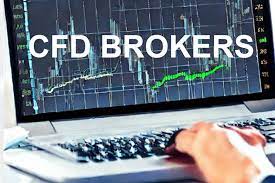
What Is CFD Trading and Why Has It Grown So Popular?
CFD (Contract for Difference) trading is gaining remarkable popularity in global financial markets, attracting both seasoned traders and novices. But what is cfds trading, and what is fueling its growing appeal? Let’s break it down.
Understanding CFD Trading
At its core, CFD trading is a type of financial derivative that allows individuals to speculate on price movements of various assets without owning them. These assets might include stocks, commodities, indices, cryptocurrencies, and more. Rather than buying or selling the actual asset, traders agree to exchange the difference in the asset’s value from the time the contract is opened to when it’s closed.
Key features of CFD trading include:
•Leverage: Traders can control larger market positions with a smaller amount of capital, increasing potential gains (and risks).
•Flexibility: CFDs allow traders to profit from both rising (going long) and falling (going short) markets.
•Wide Asset Selection: CFDs cover a broad range of markets, enabling diversification within trading portfolios.
Why Has CFD Trading Grown so Popular?
Accessibility and Technology
One of the primary drivers of CFD trading’s popularity is the ease of access provided by online platforms. With advancements in technology, numerous brokers now offer CFD trading services with user-friendly interfaces, real-time data, and intuitive tools for analysis. This has allowed even beginners to enter the world of trading with minimal barriers.
Leverage Appeals to Many
Leverage is a double-edged sword, but its allure is undeniable. With CFDs, traders can magnify their exposure without committing vast amounts of capital. This enables smaller players to compete in large markets—a feature that is especially appealing to those with limited funds to invest. However, the risks associated with leverage mean it’s a tool to use with caution.
Diverse Trading Options
From tech stocks to crude oil, CFDs offer a plethora of trading opportunities. This diversity means traders can adapt their strategies to market trends, economic shifts, and global events. It also provides a chance to explore multiple sectors and assets within a single platform.
Flexibility in Short-Selling
Traditional investments often require a bullish market to profit—but not with CFDs. The ability to short-sell (bet against an asset’s price) in CFD trading opens up avenues to gain even during bearish market conditions. This versatility has made it a favorite for those who wish to hedge or explore speculative opportunities.
Minimal Paperwork and Low Entry Costs
Unlike direct investments, CFDs eliminate the need for acquiring ownership of the underlying asset, which reduces the administrative complexities and costs involved. Some brokers offer zero commission trading, further lowering the financial barriers for entry.
The Risks to Consider
While CFD trading offers immense opportunities, it comes with risks. High leverage can lead to significant losses, often exceeding the initial deposit. Additionally, trading fees like spreads and overnight holding costs can accumulate, reducing profitability over time. It’s essential for traders to have sound risk management strategies and understand market conditions before diving in.